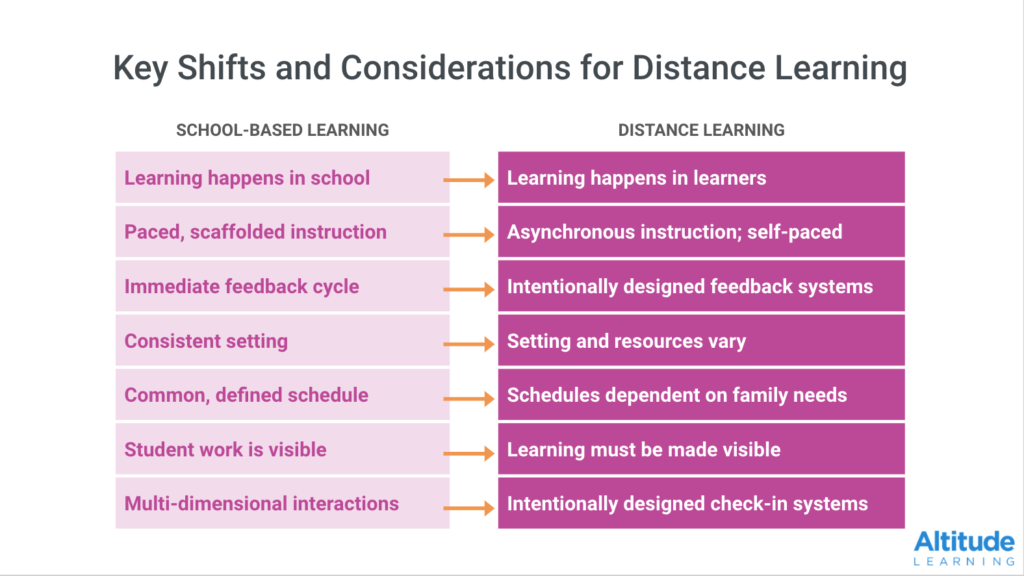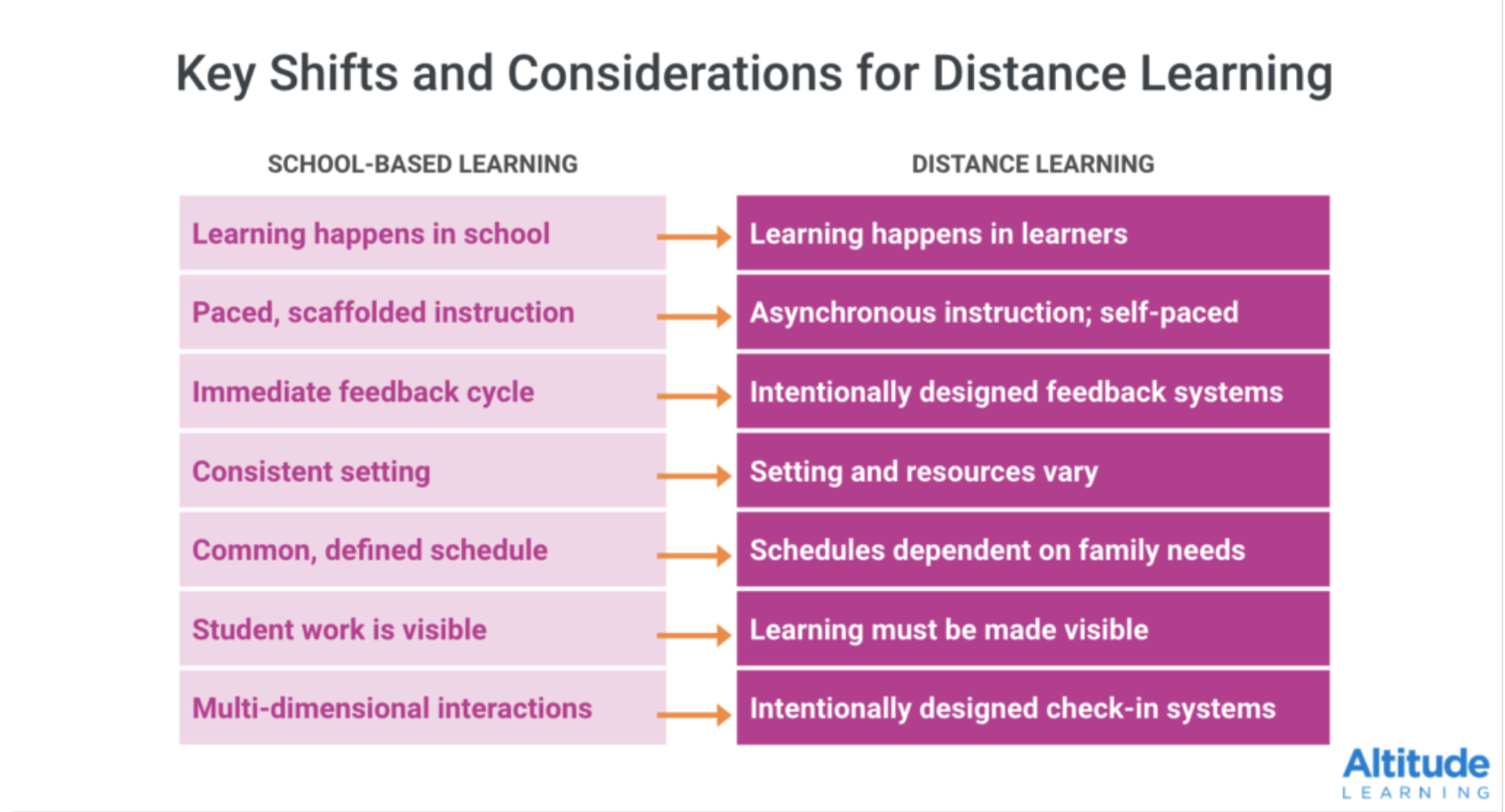As we look forward to the fall in which many schools will continue in a distance learning model to begin the year, we know that the Herculean effort that has been referred to as emergency remote learning taught us a lot about how we might better design learning experiences in the fall both in person and in a remote or distance learning model. One of the most important perspectives that should inform next steps is that of the students. YouthTruth surveyed over 40,000 students and the first finding of the report is:
Only half of students said their teachers give them assignments that really help them learn and 39 percent said they learn a lot every day.
YouthTruth Student Survey
The report highlights student perspectives on what worked and what was challenging:
“Students shared in their own words that they enjoyed having more agency over their schedule and learning pace, that they appreciated opportunities to connect with their family, and that virtual learning often afforded flexibility to learn new skills and deepen knowledge. And still, distractions at home, stress and anxiety, and deep longing for social connection underscore the importance of listening to these voices and exploring this data with empathy and responsiveness to the student experience.”
To better understand the variance in student experiences I want to shared three examples of the approaches I saw to help us think about how we can intentionally design more authentic and empowering learning models in the fall.
Student A
The day or periods are organized where students are expected to connect with their teacher and class over Zoom daily and listen to a math lesson or a social studies lesson based on the pacing guide to continue the class lecture as they would in the classroom. The screen time now functions the same way that seat time did in the classroom. Exposure to the content or the teacher is equated with learning. Students quickly became disengaged sitting in front of screen with limited interaction or choice in how and what they learn. Families struggle to force kids to participate and keep up with their assignments.
Student B
Students learn content and practice a variety of basic skills while they move through various levels at their own pace. Although the students have devices, each lesson is basically a set of digital worksheets and students often click through to be done without motivation or purpose to learn and develop new skills. Students rarely receive feedback on their work from their peers or teachers and lack motivation or purpose to complete their work.
Student C
Each morning there was a personal greeting or message from the teacher and students responded with a video response that everyone could see. Each day the class met to check in and build the community and introduce new concepts or content. This predictable schedule of synchronous time is coupled with skill building and interdisciplinary projects that required each learner to investigate and go deeper. Teachers offered regular office hours if students needed extra support or just wanted to check in. The teacher worked with a team to design lessons and had built in time during the day to provide written feedback but also checked in with their group of advisory students weekly to follow up on goals and progress to ensure connection and growth. Based on the learning objectives and student interests, the teacher co-created the learning experiences that allow for authentic learning, learner agency and competency based assessment that focuses on what was learned.
Intentionally Designing for Distance Learning

I have been working with our team at Altitude Learning and our partners to define and support these key shifts in distance learning models. Effective distance learning blends both asynchronous and synchronous learning experiences to maximize the time together virtually to build community and learn collaboratively, while also providing autonomy for learners to engage in content, read, investigate and demonstrate mastery at their own pace. It has become increasingly clear that spending 6 hours a day online is not ideal. The National Board of Professional Teaching standards recommend structured school time for different grade bands is as follows:
- Elementary: 1-2 hours a day
- Middle schools 2-3 hours a day
- High School 3-4 hours
Given these constraints it might be tempting to organize your day in an abbreviated schedule like 20 minutes for math, 20 minutes for reading, 20 minutes of writing, 20 minutes of science etc. or period 1, period 2, period 3 etc. However, if you are focused on authentic learning and outcomes rather than time on tasks or activities, you might consider the backwards design or understanding by design approach to create authentic remote learning experiences.
- Determine what matters most and prioritize desired outcomes: Consider what you want students to learn. I.e content, knowledge skills, habits.
- Identify how you might assess the desired outcomes (authentic tasks, demonstration of learning, creation of media or other content)
- Design learning experiences and curate resources for students to learn that includes multiple opportunities to learn (whole group, small group, 1:1, asynchronously)
- Provide Asynchronous and Synchronous learning experiences to guide the learning path.
Strategies for Synchronous and Asynchronous Learning
Synchronous learning happens in real-time and what was done face to face is usually through video tools such as Zoom or Google Meets, allowing for discussion, small group targeted instruction, or question and answer.
- Community building: Relationships are foundational to learning and intentionally building community and a safe space to connect and learn is critical to start the year but also important to sustain the culture throughout the year.
- Community check-in
- Share celebrations
- Discuss current events
- Breakout groups
- Show and tell
- Whole Group Lesson: Use this time to introduce new ideas or content where you can solicit input from students and encourage interaction.
- readers/ writers workshop
- Share a strategy
- Introduce a concept
- Launch projects or challenges
- Question and Answer
- Feedback + Guidance: Create intentional time to connect and provide feedback to learners and ensure that peers can review and provide feedback and guidance as well.
- 1:1 check in
- Small Group Instruction
- Peer Feedback
- Goal setting
- Celebration of Learning: Opportunities to make learning public and share progress is motivating and helps learners take ownership of their learning.
- Exhibition
- Student presentations
- Share and reflect on learning
Asynchronous learning occurs through online channels or can occur offline and allows the learners to move at their own time, place, and pace.
- Teach New Skills or Content: Record the content that you want all learners to have access to 1 time and allow students to engage at their own time.
- Record a morning greeting
- Create a mini video with a lecture on specific information that you want all kids to hear
- Record a Mini-Lesson 5-15 minutes
- Model a strategy
- Record a daily read-aloud of a chapter of a children’s book (for all ages)
- Personalized Learning: Guide students through a variety of learning activities and complete tasks at their own pace where they can slow down and speed up based on their grasp of the concept and their own context.
- Curate videos, articles, practice activities for learners to engage and go deeper on a specific skill, concept, and practice
- Use hyperdocs to link to a variety of resources that you want students to engage in
- Choice Board: Provide voice and choice with clear parameters
- Project Time: Provide structure and opportunities to engage in interdisciplinary projects to learn and apply new knowledge and skills
- Inquiry/ Passion projects
- Research/ Investigate
- Construct meaning
- Make something
- Reflection: Build in time to reflect on goals, new learning and needs
- Goal setting and progress check
- Self assessment
- Review feedback
- Critique and revision
As we look toward the fall with so much uncertainty, one thing is clear: School will be different. I have had countless conversations with people trying to figure out how to digitize their curriculum and monitor completion of assignments as a proxy for engagement. We all know this is not engagement. Now is the time to focus on what Hayden, a high school student shared: “more learning and less assigning.”
As always, I encourage you to talk to teachers, students, families in your community and understand their experiences and get their input on how to design and improve your learning model and share what you learn. Onward.



Excellent!
Hi Katie – Can you share a citation for where you get the NBPT recommendations for the amount of time for the different age bands of learners? Thanks!
By balancing between the two.
I need to change my thinking to see that asynchronous learning allows students the opportunity to complete lessons in their own time and pace
Clearly written, and I totally understand the offering students choices and project based learning. I am not sure if my students will suddenly see school work as a “passion project” and the individualized attention suggested is a very tall order for anyone teaching 100+ students.
Excellent article. Deep analysis on sts perspective. Great guide to implemente syncronous and asyncronous activities